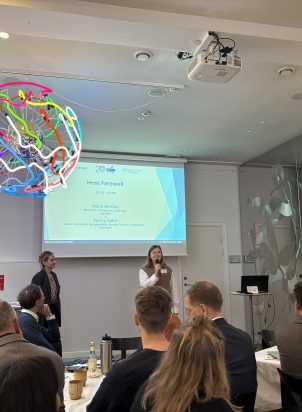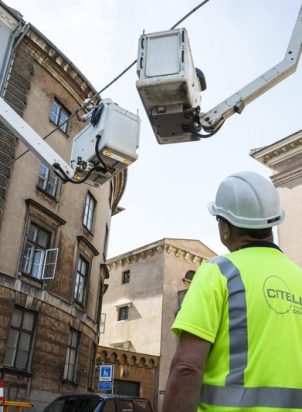Development happens locally – but what does that look like at a cross-national level? During the United Nations High-Level Political Forum (HLPF) on Sustainable Development, the Nordic countries presented the first-ever Nordic Voluntary Sub-National Review (VSR), setting a new global benchmark for localising the Sustainable Development Goals (SDGs). Representatives from Sweden, Finland, Iceland, Norway, and Denmark presented the collaborative findings, and international and youth actors offered learnings for implementing the 2030 Agenda at the local level across Nordic municipalities.
“Local level is taking the lead”
“As this new Nordic VSR shows, the local level is taking the lead in advancing sustainability and transforming society, by integrating the SDGs in steering models and utilising them as tools to spur cross-sectoral collaboration and enhance the quality of life for citizens,” declared Anna Karin Eneström, Permanent Representative of Sweden to the United Nations, as she opened the session. This sentiment was echoed throughout the event, highlighting the critical role that municipalities play in translating global goals into strategic local actions.
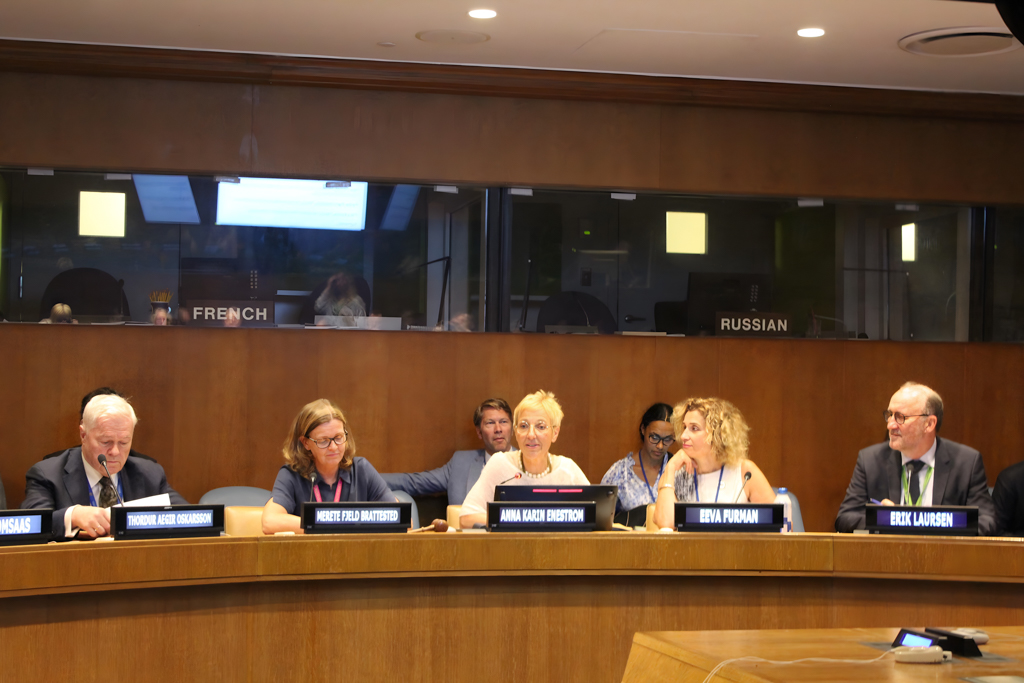
The most sustainable region in the world by 2030
Nordic countries operate under a decentralised welfare model where regions and municipalities have extensive responsibilities based on strong local self-government, something which Merete Fjeld Brattested, Norway’s Permanent Representative to the UN, pointed out to serve as a benchmark for systematically addressing sustainability challenges. The long tradition of robust relations between the different levels of government, supported by national agencies, produces reliable statistics, creating favourable conditions for working towards sustainable development. By 2030, the Nordic Region aims to be the most sustainable and integrated region in the world, according to the Vision 2030, accepted by all Nordic governments. The Vision 2030 and the 2030 Agenda are strongly interlinked. Multilevel cooperation is key to enhance the implementation of these agendas, as Eeva Furman pointed out during the opening speech.
The majority is engaged
The Nordic VSR, developed through surveys and interviews with local governments, underscores the approaches Nordic municipalities are taking to integrate the SDGs into their local governance frameworks. Over 95% of municipalities in Sweden and Norway report active work to localise the SDGs, compared to 80% in Denmark and 64% in both Finland and Iceland. These statistics reveal a strong commitment to sustainable development across the region, with room for growth and improvement.
Five highlights from the report
- The majority of responding municipalities are engaged: over 95% of municipalities in Sweden and Norway report active work to localise SDGs, 80% in Denmark, and 64% in both Finland and Iceland.
- Holistic integration: Most responding municipalities integrate the SDGs holistically: focusing on economic, social, and environmental sustainability.
- Strategic implementation: Many municipalities integrate the 2030 Agenda into local strategies, planning systems, budgets, and procurement guidelines.
- Priority SDGs: While all SDGs are recognised as important, some municipalities prioritise specific goals, with SDG 3 (Good Health and Well-Being), SDG 11 (Sustainable Cities and Communities), and SDG 13 (Climate Action) at the top.
- Measuring progress: 68% of responding municipalities in Finland and Sweden measure progress, 45% in Norway, 38% in Denmark and 18% in Iceland.
A holistic approach to sustainability
The report showcases how Nordic municipalities are not just ticking boxes but are holistically integrating the SDGs across economic, social, and environmental dimensions. Many municipalities have embedded the 2030 Agenda into local strategies, planning systems, budgets, and procurement guidelines. Notably, Finnish municipalities lead in integrating the SDGs into local strategies and visions, with 93% of them incorporating the goals into their frameworks.
Into which of the following steering documents have you integrated the Agenda 2030?
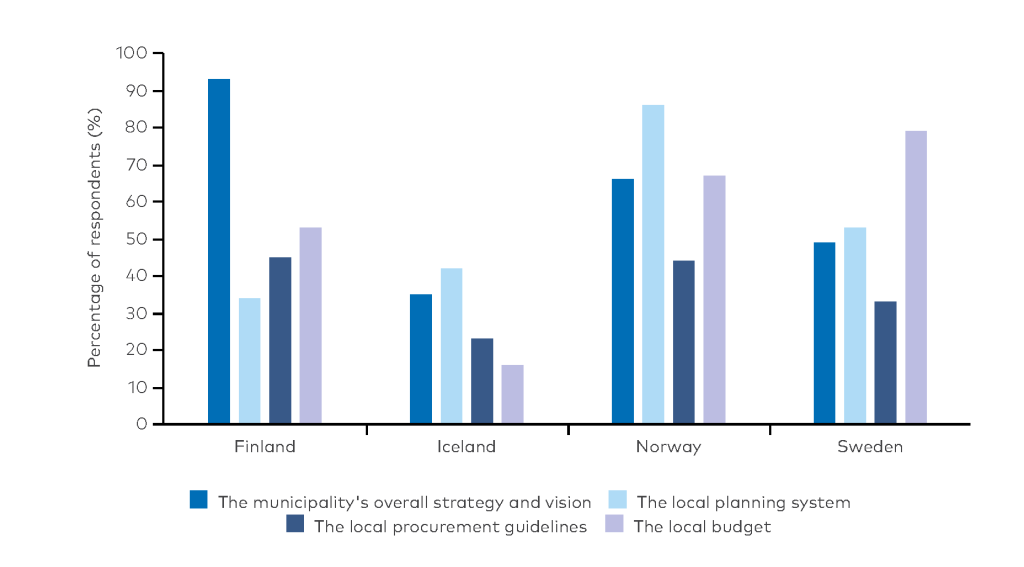
Implementing success factors and facing challenges
However, the development is not without its hurdles. The VSR presents several challenges for Nordic municipalities, including: lack of capacity to work with the 2030 Agenda, lack of political prioritisation, lack of support from the state, and lack of methods and tools, Anne Romsaas, Chief Adviser SDG, The Norwegian Association of Local and Regional Authorities presented.
Youth and civil society to achieve social change
One of the unique features of the Nordic VSR is the inclusive approach, including subchapters by the Nordic Youth for Sustainability Network and the Nordic Civil Society Network, ensuring that the voices of youth and civil society are integral to the narrative. “Youth voices are often tokenized. Structural barriers like limited access to decision-making, insufficient resources, and lack of political will hinder genuine involvement,” said Ari Sigurdarson, Norway’s UN Youth Delegate on Sustainable Development, followed by suggesting that more countries put youth councils in place. The comments were reflected in the discussions that followed, highlighting innovative youth-inclusive initiatives and the importance of driving sustainable development.

The Nordic Toolbox: An interactive resource for peer-learning
Complementing the VSR is the Nordic Toolbox, an interactive online platform that offers a of tested methods and initiatives from Nordic municipalities, to facilitate peer learning and inspire local action around the world. During the event, Frida Johnson and Sara Sjödal of Tierp Municipality in Sweden presented their work on including youth and children in policy proposals. Their work builds on five steps that can easily be copied by other municipalities and can be found in the Nordic Toolbox.
A call to global action
The launch event concluded with forward-looking perspectives: “Local action is still seen as a peripheral issue,” said Shipra Narang Suri, Chief of Urban Practices Branch, UN-Habitat: “This cannot continue. When we talk about Post 2030, the local and regional level must be involved.”
Emilia Saiz, Secretary General of UCLG, highlighted that the Nordic countries could serve as inspiration for other regions looking to enhance their sustainable development strategies and that they show that welfare states accelerate sustainability work, which is needed in times when values such as democracy, welfare, and equality are threatened.
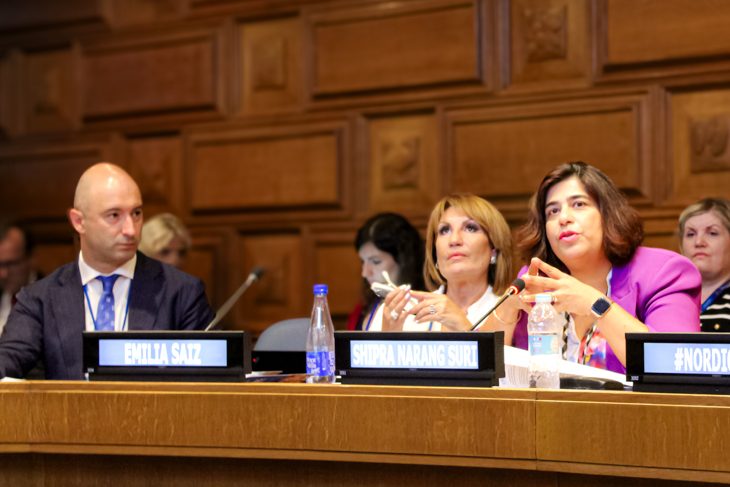
Explore the Nordic VSR and Toolbox
The full Nordic VSR report and the Nordic Toolbox are now available online, providing valuable resources for municipalities worldwide. As the global community continues to strive towards the 2030 Agenda, the Nordic example offers both inspiration and practical guidance.
Watch a full recording of the launch event below.




